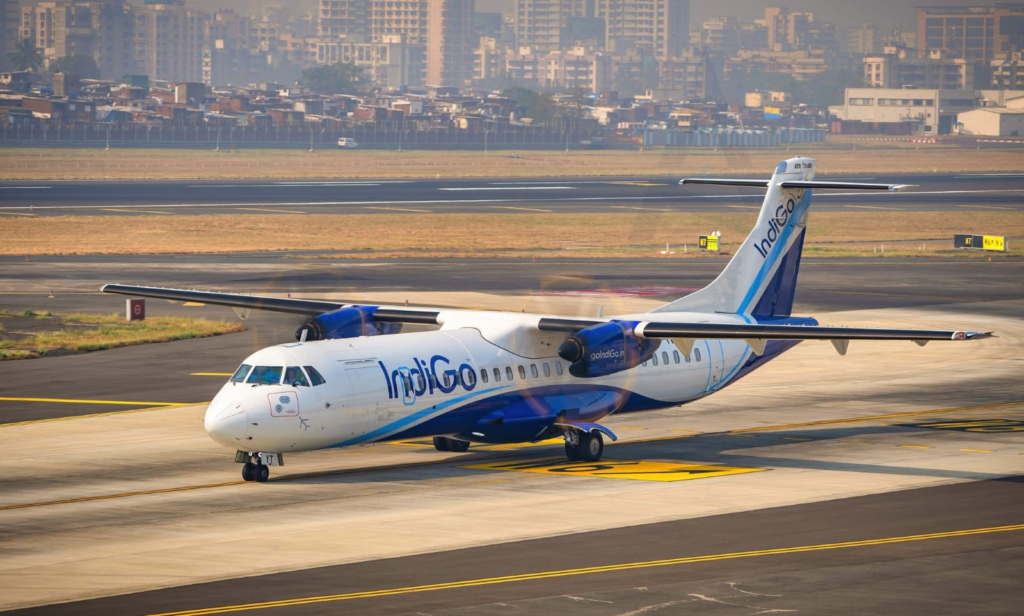ATR, the European regional aircraft manufacturer known for its turboprop planes, is eyeing India as a potential location for establishing a new assembly line. The company is exploring this strategic move in response to the recent extension of the UDAN scheme, India’s ambitious regional connectivity initiative. The scheme, which aims to make air travel accessible and affordable to underserved and unserved regions, has significantly boosted demand for smaller aircraft, especially turboprops, making India an attractive destination for aircraft manufacturing.
The UDAN (Ude Desh ka Aam Nagrik) scheme, launched in 2017, has been instrumental in connecting India’s regional hubs by offering subsidies and incentives to airlines that operate on underdeveloped routes. As the scheme gets extended with renewed government commitment, it is expected to further stimulate the demand for smaller, fuel-efficient aircraft capable of operating on shorter runways and in diverse geographic conditions. ATR’s turboprops, known for their versatility and lower operational costs, are well-suited for this market, making India an ideal location for an assembly line.
For ATR, setting up an assembly line in India presents a unique opportunity to tap into one of the fastest-growing aviation markets in the world. With its extensive network of regional routes and a growing middle-class population, India offers a vast market potential for ATR’s aircraft. Moreover, establishing a local assembly line would allow ATR to better cater to the specific needs of Indian carriers, customize its products to local operating conditions, and provide quicker deliveries. This could also translate into cost advantages through localized production and supply chain efficiencies, making ATR’s aircraft even more attractive to Indian operators.
The company’s interest in India is also aligned with the Indian government’s push for greater indigenization in the aviation sector. The “Make in India” initiative aims to bolster domestic manufacturing and attract foreign investment. By setting up an assembly line in India, ATR could leverage the benefits offered by this initiative, such as tax incentives, ease of doing business, and access to a skilled workforce. It would also position ATR as a key player in supporting India’s aspirations to become a hub for aircraft manufacturing, thereby contributing to the country’s aviation growth story.
ATR’s potential move to India could bring several advantages to the local aviation ecosystem. It could generate employment opportunities, boost skill development, and promote technological advancements in the sector. Furthermore, a local assembly line would strengthen the supply chain, encourage the growth of local suppliers, and enhance the overall competitiveness of the Indian aviation industry. It could also help reduce India’s dependence on imports, foster innovation, and attract other global aviation players to consider India for their manufacturing and assembly needs.
Additionally, a local ATR assembly line could play a crucial role in supporting India’s efforts to reduce its carbon footprint. ATR’s turboprop aircraft are known for their fuel efficiency and lower emissions compared to jet engines, aligning with India’s sustainability goals in aviation. By manufacturing these aircraft locally, India could promote the use of greener aviation technologies and position itself as a leader in sustainable regional air connectivity.
While ATR has not yet finalized its plans, the company’s interest in India signals confidence in the country’s potential as a manufacturing base and a market. With the extension of the UDAN scheme and the government’s continued support for regional connectivity, India is well-positioned to attract global aviation giants like ATR. The combination of growing demand, favorable government policies, and a robust aviation market makes India an attractive destination for ATR to expand its footprint and contribute to the next chapter in India’s aviation journey.
As ATR evaluates the feasibility of this move, stakeholders in India are optimistic about the potential benefits. The establishment of a new aircraft assembly line would not only strengthen India’s aviation capabilities but also reaffirm the country’s position as a critical player in the global aerospace sector. It is a development that could reshape regional air travel in India, bringing more connectivity, economic growth, and opportunities for the Indian aviation industry in the years to come.
